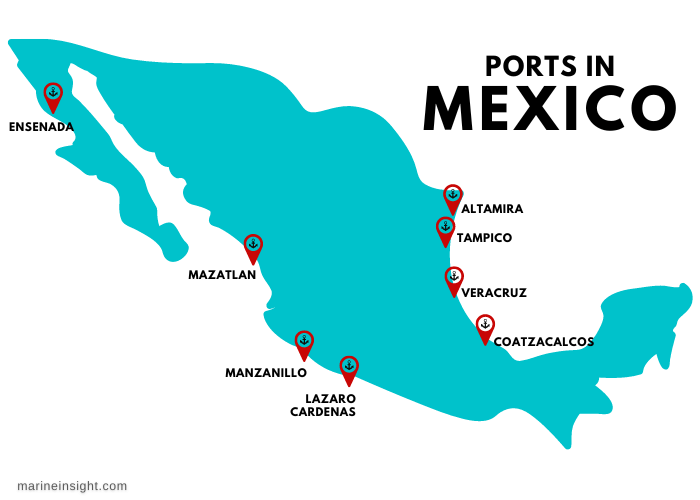10 Major Ports in Mexico
Mexico is positioned in the southern part of the North American Continent and is the tenth most populated country in the world.
A developing economy, it has been categorised as an upper-middle-income country by the World Bank and is the second biggest economy in Latin America.
It has a diverse cultural heritage and houses a large number of UNESCO World Heritage sites. Financial services and tourism are leading sectors followed by automobile, oil, electronics industries and Agriculture.
Mexico is surrounded by the Pacific Ocean and the Caribbean Sea. It has more than 20 seaports situated on its Atlantic coast and around 12 on its Pacific Coast.
Let us review the 10 biggest ports in Mexico.
1. Port of Manzanillo
Manzanillo port is situated in the State of Colima on the western Pacific Coast of Mexico. A cargo port and a famous resort city, Puerto de Manzanillo is the main gateway for international trade, linked to the nation’s industrial and commercial corridor in the western and central regions.
It has direct shipping connections with 125 ports in more than 40 countries including the United States, Canada, Japan, India, China, Russia and Germany.
In 2021, the port handled 3.37 million TEUs, a 15.9 % increase from the previous year, making it the busiest container facility in Mexico.
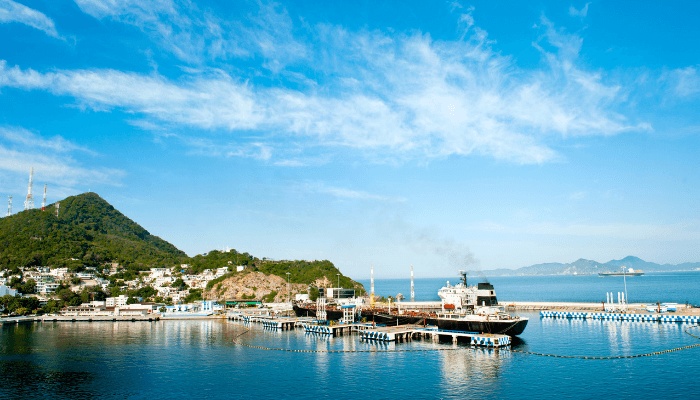
Its economy is based on the manufacturing, commercial and tourism sectors as the region is abundant in natural resources.
Principal exports comprise fish, corn, lemons, bananas, canned food, wine, copra, lumber, cement, etc. Repackaging services for shoes, clothes and chemical products are also provided.
A wide range of products are unloaded at the port including consumer goods like wax, agricultural produce such as wheat, sorghum, fertilisers, sulphur, and zinc concentrates.
The port covers 437 hectares of land area and consists of 19 operational berths divided among a breakbulk terminal, an international container terminal, an oil terminal and a passenger terminal capable of accommodating the biggest cruise ships.
2. Port of Lazaro Cardenas
Lazaro Cardenas Port lies at the mouth of the river Rio Balsas on Mexico’s Pacific coastline in the State of Michoacán.
A well-protected, deepwater port, it is the second busiest in the country with an annual capacity of 25 million tonnes of cargo and 2,250,000 TEUs.
In 2021, 1.69 million TEUs were handled at its container terminal, recording a tremendous 58.9% growth from 2020.
It serves a steel mill and the industrial zone and also houses a naval base on the premises. Major exports include iron plate, steel bars, diammonium, phosphate and container goods.
Cardenas port receives shipments of pellets, pig iron, sulphur, coke, grains, minerals, gasoline, diesel etc.
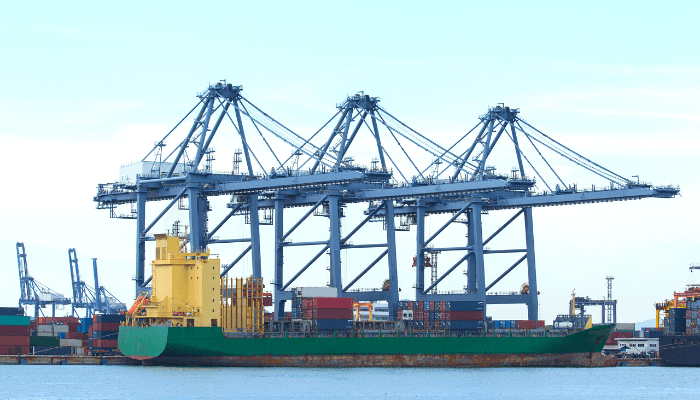
Lazaro Cardenas is the only Mexican port with an 18 m wide access channel capable of receiving the largest cargo vessels.
It spans 25 hectares and has 22 wharves divided among its five public and four private terminals. The former specialises in handling grains, containerised cargo and miscellaneous goods.
The latter deal with bulk minerals, fluids, coal and fertilisers.
3. Port of Ensenada
Ensenada port is located near Todos Santos Bay off the Pacific Ocean in the State of Baja California lying in the northern part of Mexico.
Due to its advantageous position near the US border and the Pacific Rim, it has access to crucial international shipping routes, linking it with 64 ports in 29 countries.
It covers 9000 square miles and contains 6 multipurpose wharves for handling all types of cargo.
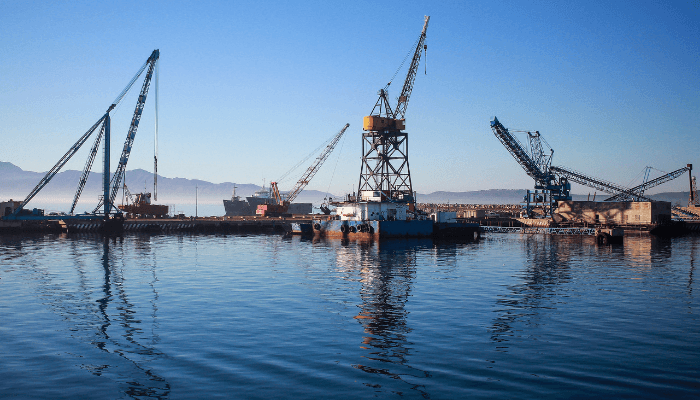
The port city is a renowned holiday destination, adorned with luxury hotels, vacation homes, gorgeous beaches and finger-licking seafood restaurants.
Its economy also rests on agriculture and livestock rearing. Olives and grapes are produced in abundance while the majority of cotton is exported to Asian countries and the United States.
Other export products include limestone, crushed rock, bagged stones and sand. Fertiliser is the main import arriving from Asia, Nicaragua and New Zealand.
Possessing a large fishing fleet, the port is popular among sports fishers as well as for commercial fishing. It is also a prominent container port that handled around 394,911 TEUs in 2021.
A multipurpose facility, it consists of shipyards and marinas for accommodating yachts and cruise ships.
4. Port of Mazatlan
Mazatlan, which means ‘Place of Deer’ in Nahuatl, was a small fishing village before the commencement of port expansion in the late 1990s.
Today, it is a bustling port having maritime trade links with Asia, Europe and the Americas. Situated in the State of Sinaloa in western Mexico, it is the fourth biggest container port in the country which handled 41,895 TEUs in 2021.
Puerto de Mazatlán’s economy rests on agro-based industries like food processing, fish meal and brewing, however, industrial cargoes such as rolled steel, containers and automobiles are also received at the port.
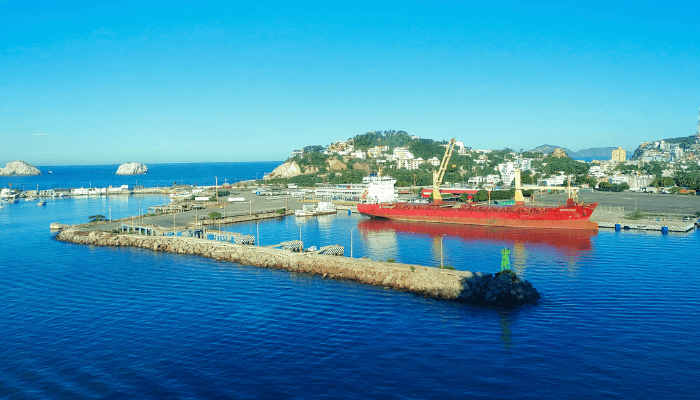
It has 12 berthing facilities with a total quay length of 1426 m, for handling general cargo vessels, container ships, tankers and ferries.
A popular resort town on the Pacific Coast, it is known for its golden sand beaches and picturesque waterfront overlooking the international cruise terminal. It possesses the second-biggest commercial fishing fleet in Mexico and boasts a thriving fishing industry.
It has a 2500 m long and 12 m deep access channel capable of accommodating ships with an LOA of 300 m. Puerto de Mazatlán contains six warehouses covering 15,000 m2 for storing loose cargo, two yards for keeping automobiles and a 90,000 m2 cold shed.
5. Port of Veracruz
Founded by the Spanish Conquistador named Hernan Cortes in the 15th century, the city of Veracruz has transformed into an important financial centre and a trading hub.
The Port of Veracruz is located on the Gulf Coast of Mexico near the Bay of Campeche. It serves the central and southern regions of the country and is also connected to North and South America, Europe and Africa.
Approximately 1,600 vessels, 16,50,000 tonnes of cargo and 560,000 TEUs are handled annually at this facility.
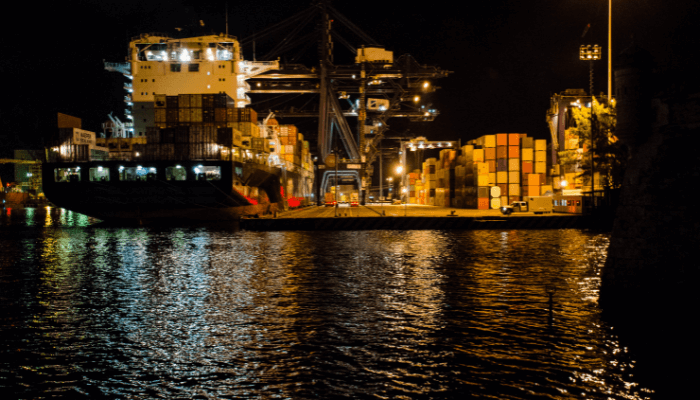
It contains 11 wharves covering 4500 m, handling diverse cargo such as corn, petroleum coke, wheat, soya, containers, steel, metal scrap, vegetable oil, rice, tallow, benzene, canola, pig iron, clinker, automobiles, machinery, chemicals etc.
The principal port on the eastern coast of Mexico, is the backbone of the city’s economy.
It is also an important fishing port and also provides water sports facilities. People from all over the world flock to the city to enjoy the Carnaval, an annual festival featuring colourful parades, local food, dance and music.
6. Port of Guaymas
Guaymas Port is situated near the Gulf of California off the Pacific Ocean in the State of Sonora, just 400 km away from the US border.
Positioned at the mouth of the Rio Yaqui, the port is an important shipping, industrial and tourism centre of Mexico.
Around 6.6 million tonnes of cargo and over 1000 ships passed through the Guaymas port in 2020. It boasts one of the best natural harbours in the world and covers 90 hectares of area divided among 6 wharves.
It serves the agricultural hinterland and exports cash crops like cotton, vegetables, wheat, corn, soy, livestock, furniture, and metals like copper, magnetite, and gypsum.
It also deals with general cargo like wood, steel, Roro, and liquids including petroleum, diesel, sulfuric acid, ammonia, and fish oil.
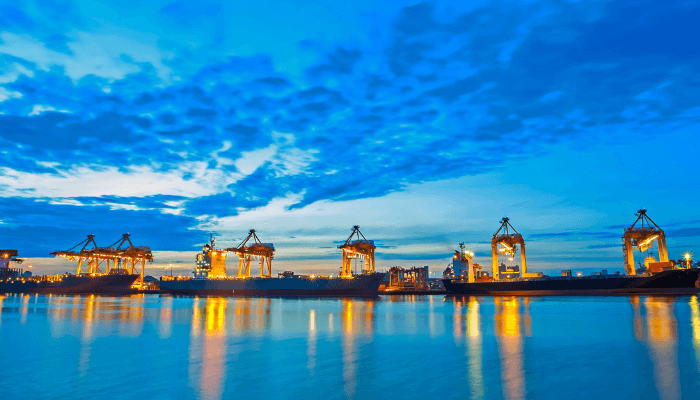
Although many seafood processing plants are present near the port, overfishing and decreasing freshwater levels in the Colorado River have put considerable strain on the port’s fisheries.
7. Port of Tampico
Tampico Port lies on the northern bank of the Río Pánuco in the State of Tamaulipas, just ten kilometres away from the Gulf of Mexico.
It is the major maritime gateway for petrochemical and mining products, steel, wood, metals, minerals, molasses and other industrial products.
Approximately 8,831,000 tonnes of cargo including 11,000 TEUs are handled at the facility annually. 20 major shipping lines connect Tampico with 100 ports in countries like the United States, Canada, Cuba, Brazil, Singapore and Australia.
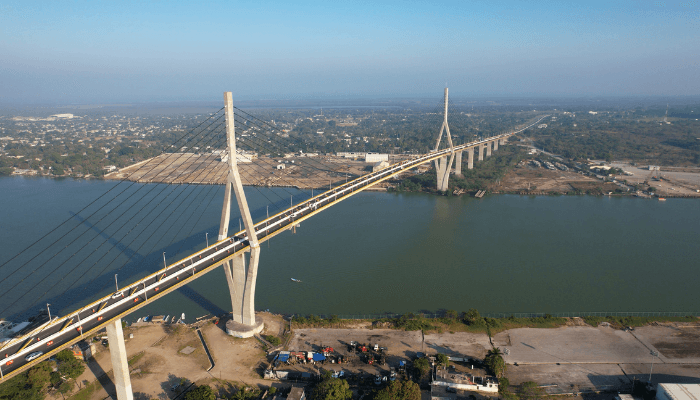
It is an important commercial and military harbour consisting of 24 berthing facilities. Drydocks and shipyards are located on the southern bank of the river including 2 tanker terminals operated by the Pemex company.
Tampico has 6 private and 2 public terminals and 10 fields for constructing marine oil rigs.
It has ample storage space including 38,000 m2 of warehouse area, 6500 m2 of sheds and 330,000 m2 of open yards for storing general cargo.
8. Port of Altamira
Altamira port lies on the Gulf of Mexico and serves the economic and industrial regions of the country including the state of Tamaulipas, Coahuila, San Luis Potosi, etc.
It is also a much-liked holiday destination visited by nature lovers, golfers, sports fishers, and hunters. It also houses numerous industries including shipbuilding, canneries, sawmills, clothing, textiles and machine repair workshops.
It handles petroleum, LNG, agave fibre, sugar, cattle, copper, coffee, hides and containerised cargo. Around 1550 ships, 12,185,000 tonnes of cargo and 397,000 TEUs are handled at the port every year.
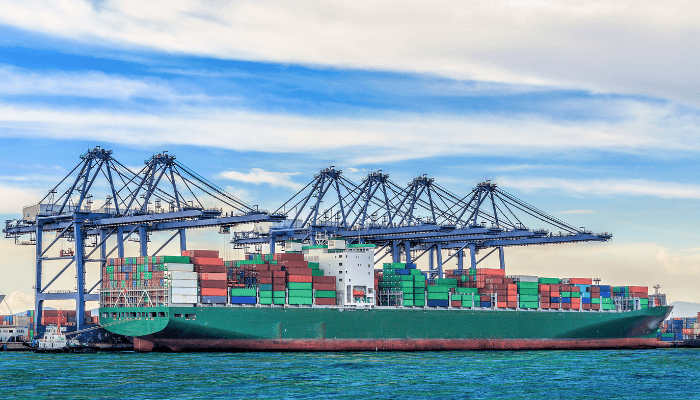
It has a large modern container terminal consisting of 4 docks. However, it mainly serves the region’s petrochemical sector and contributes to job creation and revenue generation.
companies like BASF and POSCO have processing plants near the port facility.
9. Port of Coatzacoalcos
This port lies at the mouth of the Coatzacoalcos River before it flows into the Gulf of Mexico. It is the main oil port of the nation having a natural harbour divided into two portions; a free port lying on the western bank of the river and the Pajaritos oil port owned by Pemex company.
An important port and a transportation centre, Coatzacoalcos is linked to the Mexico metropolitan area and Merida by railways.
It primarily exports petroleum products manufactured in Minatitlán followed by forest products, agricultural goods and consumer goods.
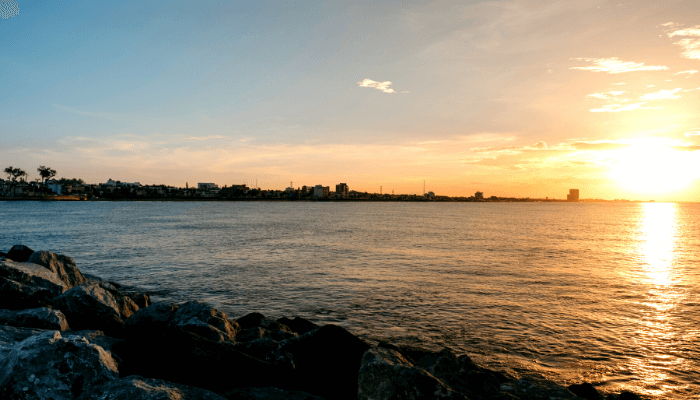
The port’s liquified gas terminal contains 7 wharves for accommodating gas carriers and oil tankers. It also has storage facilities for bulk, containers and general cargo.
It has 8 conventional berths, and 9 tanker berths and handles 1,350 vessels carrying 29,220,000 tonnes of cargo annually.
10. Port of Topolobampo
Topolobampo is located on the western coast of Mexico in a highly fertile agricultural zone that produces more than half of the country’s agricultural output.
Hence, crops like wheat, soy, sorghum, vegetables, and fruits comprise the majority of exports followed by livestock. It has 4 private terminals for handling general cargo, containers, oil products, LPG and ammonia.
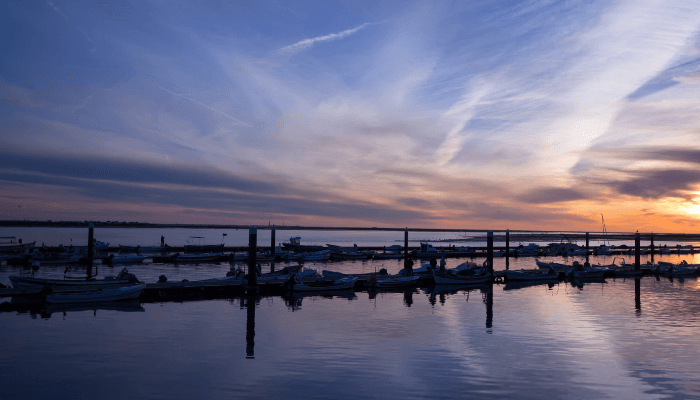
Topolobampo has more than 10 berthing facilities and 5 fishing wharves covering 600 m with an alongside depth of 6 m for accommodating fishing vessels.
Approximately 1000 ships, 4,850,000 tonnes of cargo and 185,000 passengers are handled at this port annually.
It is connected to northern Mexico through the Chihuahua Pacific railroad and has trading partners across the globe, such as Japan, Singapore, Korea, New Zealand, Taiwan and the Americas.
You might also like to read:
- 7 Major Ports in Saudi Arabia
- 6 Major Ports in South America
- 6 Major Ports in the Bahamas
- 5 Major Ports in South Korea
- 10 Major Ports In China
Disclaimer: The authors’ views expressed in this article do not necessarily reflect the views of Marine Insight. Data and charts, if used, in the article have been sourced from available information and have not been authenticated by any statutory authority. The author and Marine Insight do not claim it to be accurate nor accept any responsibility for the same. The views constitute only the opinions and do not constitute any guidelines or recommendations on any course of action to be followed by the reader.
Do you have info to share with us ? Suggest a correction

About Author
Shilavadra Bhattacharjee is a shipbroker with a background in commercial operations after having sailed onboard as a Third Officer. His interests primarily lie in the energy sector, books and travelling.
Latest Maritime Knowledge Articles You Would Like:
Subscribe To Our Newsletters
By subscribing, you agree to our Privacy Policy and may receive occasional deal communications; you can unsubscribe anytime.
Web Stories



